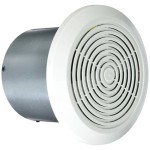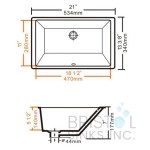PVC Trim Moulding for Bathrooms: A Comprehensive Guide
When it comes to bathroom renovations, PVC trim moulding stands out as an exceptional choice. This versatile material offers a range of benefits that make it the ideal solution for any bathroom design.
Benefits of PVC Trim Moulding
1. Water Resistance: PVC is renowned for its exceptional water-resistant properties, making it an excellent choice for bathrooms where moisture is prevalent. Unlike wood or MDF mouldings, PVC will not warp, swell, or rot when exposed to water, ensuring a long-lasting and durable finish.
2. Mold and Mildew Resistance: The non-porous surface of PVC prevents moisture from penetrating, eliminating the breeding ground for mold and mildew. This is a crucial aspect for bathrooms, where humidity levels can be high.
3. Durability: PVC trim moulding is exceptionally durable and resistant to impact and wear. It can withstand the daily rigors of bathroom use without showing signs of damage, making it a wise investment for any homeowner.
4. Low Maintenance: Unlike wood or MDF mouldings, PVC trim requires minimal maintenance. It does not need to be repainted or refinished regularly, as its color and finish remain vibrant for years.
5. Versatility: PVC trim moulding is available in a wide range of styles and profiles, from classic to contemporary designs. This versatility allows you to match the moulding to your desired bathroom aesthetic.
Types of PVC Trim Moulding
There are two primary types of PVC trim moulding available:
1. Solid PVC Moulding: This type of moulding is made from solid PVC material throughout, offering unparalleled strength and durability. It is ideal for areas that experience heavy use or are vulnerable to impact.
2. Hollow PVC Moulding: This type of moulding is constructed with a hollow core, making it lighter and more cost-effective than solid PVC moulding. It is suitable for areas that do not require exceptional strength.
Installation of PVC Trim Moulding
Installing PVC trim moulding is relatively straightforward and can be completed by DIY enthusiasts or professional contractors alike. The process involves the following steps:
1. Measure and Cut: Measure the desired length of trim moulding and mark it accordingly. Use a miter saw or a handsaw to cut the moulding.
2. Apply Adhesive: Apply a thin layer of construction adhesive to the back of the trim moulding.
3. Secure the Moulding: Position the trim moulding in place and press it firmly against the wall or substrate. Use finishing nails to secure it further, countersinking them slightly below the surface.
4. Fill and Finish: Fill any nail holes or gaps with a paintable caulk. Allow it to dry completely, then sand it smooth and touch up with paint or caulk as needed.
Conclusion
PVC trim moulding is a superior choice for bathroom renovations due to its water resistance, mold resistance, durability, low maintenance, and versatility. With careful installation, PVC trim moulding can enhance the aesthetic appeal of any bathroom, providing a long-lasting and functional finishing touch.

Bathroom Wall Trim Ideas Using Wainscoting And Crown Molding The Designery
Bathroom Wall Trim Ideas Using Wainscoting And Crown Molding The Designery

10 Bathroom Makeover Quick And Easy Bathtub Trim

Ekena Millwork 3 In X 5 8 96 Crown Moulding Pvc Wm49x96swpv The Home

Crown Moulding In Bathrooms

Crown Moulding In Bathrooms
Bathroom Wall Trim Ideas Using Wainscoting And Crown Molding The Designery

Ekena Millwork 3 In X 5 8 96 Crown Moulding Pvc Wm49x96swpv The Home

Pin Page

Finishing Trims For Bathroom Cladding Panels Celplas Pvc Ltd







